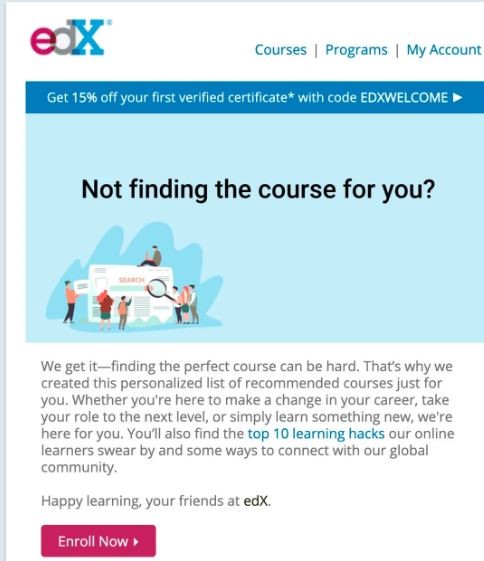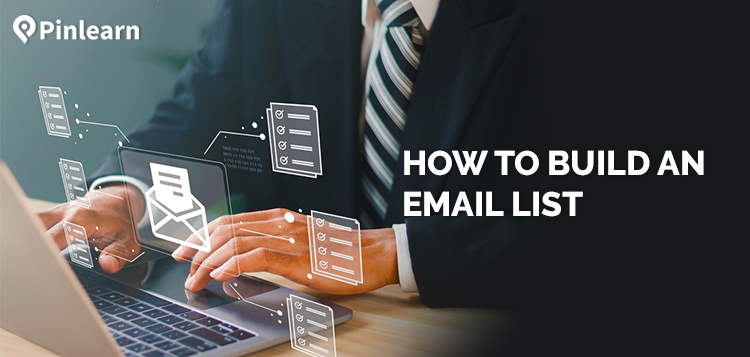How to Build an Email List Before Launching a Course
You can spend hours creating subject lines, designing, and optimizing your email copy for your actual course launch. But if you don’t have an active email list to send to, all of that effort would be in vain.
Figuring out how to build an email list before launch can be daunting, especially if you are planning to do it from scratch. However, it is definitely worth putting in the work early as your email list would be the most important investment before and after you launch the course.
You are going to need an email list to launch your online course, as email marketing is a BIG part of the launch process.
In this post, let’s look into strategies to build an email list and get new email subscribers prior to launching your online course.
Strategies on how to build an email list to launch your online course
1. Pick the best-suited email marketing software
If you want to build and manage an email list for your course launch, start by choosing the right email marketing software.
This is important because you can easily track customer information, like their preferences and behavior. You can integrate email with other digital marketing channels like SMS and WhatsApp.
Here’s how an email marketing software can help you automate your works:

Here’s what you can do with an email marketing software:
- Send simple and beautiful emails by choosing from branded email templates you like.
- Leverage sign-up forms and landing pages.
- Organize email subscribers and collect details about them.
- Create customizable user segments.
- Build automated email funnels.
- Stats on every email to understand how each email performs by looking at open and click rates.
Some of the email marketing software you can use include MailChimp, Omnisend, Drip, Moosend, Hubspot, Mailerlite, etc.
2. Enhance your CTA text for better results
Write a call-to-action (CTA) copy so that your users understand the value of your incentives across your forms.
Work around CTA phrases like “Subscribe,” “Download,” “Get your free eBook,” etc., to see which yields better performance. You can also try A/B testing on different designs, graphics and languages.
Here’s an example of a call to action you can add.

3. Place your sign-up form strategically
Once you create a signup form for your online course-selling website, you must decide where to place it to maximize the results.
Place it in a space where it will reach the most website visitors.
Always position your signup forms on high-traffic pages of your site. It could be homepages, headers and footers or on the side bar of your site.
If growing your email list is your top priority, you can also use pop-up forms.
Pop-up forms help you convert better than inline forms, as they are impossible to miss and generally force a response. It’s just either signing up or closing the window.

Now, there are 3 different types of pop-up forms:
Time delayed: These type of pop-ups comes up after a user has been on the website for a specific time.
Scroll delay: These pop-up forms appear once a user has scrolled to a specific page part.
Exit intent: These pop-up forms appear when the user is about to exit the page. That way, you don’t interrupt their browsing.
4. Decide on the depth of information to be collected
When performing email marketing activities, you must decide how much information to collect.
The simpler you can keep the forms, the more effective your strategies will be.
Just ask your users for the information you really need- just an email address is enough.
Now, here are the things you need to consider:
Email segmentation: Create an email segmentation strategy to sort your customers into different segments when they sign up for your emails.
Getting the right leads: Add a couple of hurdles to your email signup to filter out contacts you know won’t convert. Because forcing leads to give you an email address doesn’t always work and will earn low-quality sign-ups.
Collecting marketing data: Email signup forms can help you collect data about people interested in your products, how they came to know about you, their location etc.
5. Build landing pages that convert
Dedicated landing pages for your online course can play a significant role when trying to grow your email list. A landing page does exactly what it says. It brings or helps people “land” on it.
Landing pages also help in SEO as users can directly search for “sign up for your brand name’s mailing list” on Google.
6. Leverage chat to make signups interactive
Consider integrating a Chatbot that engages site visitors and helps to turn them into your email subscribers.
This is because it can also be used to generate leads. A simple conversation flow help capture subscribers’ email address and other contact information.
Encourage signups with attractive incentives
After choosing email marketing software, you must devise an effective way to start collecting emails for your clients from your website. But before you do that, you must entice people to sign up.
It is true that no one would give you their email addresses for nothing. So, create offers that they can’t resist.
Some powerful ideas include:
- Free eBook or eBooks.
- A PDF version of a case study or a popular blog post.
- A cheat sheet.
- Discount Coupons.
- A free course series.
- A webinar registration.
7. Reach out to your personal contacts manually
If you are looking for how to build an email list before launch, you must manually reach out to your personal contact. You might already know a few people on your contact list who would be interested in signing up to your email list.
Send an email to them to let them know that you are creating an email list and list the benefits they are going to enjoy once they sign up. You could also encourage them to share the news with their peers.
8. Compliment email list building with offline methods
Now that you have learned about the different ways by which you can collect the email addresses of your target clients, you must also know that you can complement these techniques with offline methods.
For example, if you are participating in any networking events, make sure you have a registration list collection strategy, which could be a QR code that bridges the gap between offline and online to grow your email list.
Conclusion
Growing your email list can be easy; we hope this list gave you some excellent ideas to grow your email list before the course launch.
As you might have understood, the best ways to grow your email list don’t have to be expensive; you just need a powerful strategy to invite new subscribers to join your email list, offer compelling reasons for them to subscribe and effective ways to keep them engaged with your emails.





